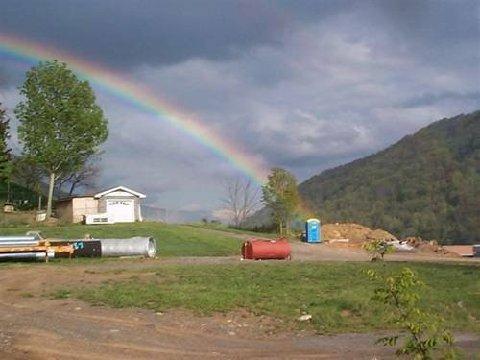The reporting about the Climate Change Summit in Bali was atrocious. That is why I held off writing anything about it until the dust had started to settle. I hate “horse race” style reporting where there is “almost an agreement”, then a suprise compromise, then a new wrinkle, finally an extended meeting that leads to A BREAK THROUGH! I do not mean to poopoo the accomplishments of either Kyoto (I lobbied for it) or even Bali, but it was clear that all the Bush administration wanted was to push the whole thing off until the next administration. He accomplished that, signed the Energy Bill and then turned around and used the bill to block California’s attempt to crack down on tailpipe toxins. And he did it with that gotcha smile of his. He knows that California will win its suit to do just that, because of the waivers they have gotten in the past and because the SUPREME COURT has always said they can. Again that will be on someone else’s watch…what a prick!
http://unfccc.int/meetings/cop_13/items/4049.php
As you can see, all the fuss was about 5 pages of text.
Advance unedited version
Decision -/CP.13
Bali Action Plan
The Conference of the Parties,
Resolving to urgently enhance implementation of the Convention in order to achieve its
ultimate objective in full accordance with its principles and commitments,
Reaffirming that economic and social development and poverty eradication are global
priorities,
Responding to the findings of the Fourth Assessment Report of the Intergovernmental
Panel on Climate Change that warming of the climate system is unequivocal, and that delay in
reducing emissions significantly constrains opportunities to achieve lower stabilization levels
and increases the risk of more severe climate change impacts,
Recognizing that deep cuts in global emissions will be required to achieve the ultimate objective of the Convention and emphasizing the urgency1 to address climate change as
indicated in the Fourth Assessment Report of the Intergovernmental Panel on Climate Change,
1. Decides to launch a comprehensive process to enable the full, effective and sustained
implementation of the Convention through long-term cooperative action, now, up to and beyond 2012, in
order to reach an agreed outcome and adopt a decision at its fifteenth session, by addressing, inter alia:
(a) A shared vision for long-term cooperative action, including a long-term global goal for
emission reductions, to achieve the ultimate objective of the Convention, in accordance
with the provisions and principles of the Convention, in particular the principle of
common but differentiated responsibilities and respective capabilities, and taking into
account social and economic conditions and other relevant factors;
(b) Enhanced national/international action on mitigation of climate change, including,
inter alia, consideration of:
(i) Measurable, reportable and verifiable nationally appropriate mitigation
commitments or actions, including quantified emission limitation and reduction
objectives, by all developed country Parties, while ensuring the comparability of
efforts among them, taking into account differences in their national
circumstances;
(ii) Nationally appropriate mitigation actions by developing country Parties in the
context of sustainable development, supported and enabled by technology,
financing and capacity-building, in a measurable, reportable and verifiable
manner;
(iii) Policy approaches and positive incentives on issues relating to reducing
emissions from deforestation and forest degradation in developing countries; and
1 Contribution of Working Group III to the Fourth Assessment Report of the Intergovernmental Panel on Climate
Change, Technical Summary, pages 39 and 90, and Chapter 13, page 776.
Advance unedited version
2
the role of conservation, sustainable management of forests and enhancement of
forest carbon stocks in developing countries;
(iv) Cooperative sectoral approaches and sector-specific actions, in order to enhance
implementation of Article 4, paragraph 1(c), of the Convention;
(v) Various approaches, including opportunities for using markets, to enhance the
cost-effectiveness of, and to promote, mitigation actions, bearing in mind
different circumstances of developed and developing countries;
(vi) Economic and social consequences of response measures;
(vii) Ways to strengthen the catalytic role of the Convention in encouraging
multilateral bodies, the public and private sectors and civil society, building on
synergies among activities and processes, as a means to support mitigation in a
coherent and integrated manner;
(c) Enhanced action on adaptation, including, inter alia, consideration of:
(i) International cooperation to support urgent implementation of adaptation actions,
including through vulnerability assessments, prioritization of actions, financial
needs assessments, capacity-building and response strategies, integration of
adaptation actions into sectoral and national planning, specific projects and
programmes, means to incentivize the implementation of adaptation actions, and
other ways to enable climate-resilient development and reduce vulnerability of all
Parties, taking into account the urgent and immediate needs of developing
countries that are particularly vulnerable to the adverse effects of climate change,
especially the least developed countries and small island developing States, and
further taking into account the needs of countries in Africa affected by drought,
desertification and floods;
(ii) Risk management and risk reduction strategies, including risk sharing and
transfer mechanisms such as insurance;
(iii) Disaster reduction strategies and means to address loss and damage associated
with climate change impacts in developing countries that are particularly
vulnerable to the adverse effects of climate change;
(iv) Economic diversification to build resilience;
(v) Ways to strengthen the catalytic role of the Convention in encouraging
multilateral bodies, the public and private sectors and civil society, building on
synergies among activities and processes, as a means to support adaptation in a
coherent and integrated manner;
(d) Enhanced action on technology development and transfer to support action on mitigation
and adaptation, including, inter alia, consideration of:
(i) Effective mechanisms and enhanced means for the removal of obstacles to, and
provision of financial and other incentives for, scaling up of the development and
transfer of technology to developing country Parties in order to promote access to
affordable environmentally sound technologies;
(ii) Ways to accelerate deployment, diffusion and transfer of affordable
environmentally sound technologies;
Advance unedited version
3
(iii) Cooperation on research and development of current, new and innovative
technology, including win-win solutions;
(iv) The effectiveness of mechanisms and tools for technology cooperation in specific
sectors;
(e) Enhanced action on the provision of financial resources and investment to support action
on mitigation and adaptation and technology cooperation, including, inter alia,
consideration of:
(i) Improved access to adequate, predictable and sustainable financial resources and
financial and technical support, and the provision of new and additional
resources, including official and concessional funding for developing country
Parties;
(ii) Positive incentives for developing country Parties for the enhanced
implementation of national mitigation strategies and adaptation action;
(iii) Innovative means of funding to assist developing country Parties that are
particularly vulnerable to the adverse impacts of climate change in meeting the
cost of adaptation;
(iv) Means to incentivize the implementation of adaptation actions on the basis of
sustainable development policies;
(v) Mobilization of public- and private-sector funding and investment, including
facilitation of carbon-friendly investment choices;
(vi) Financial and technical support for capacity-building in the assessment of the
costs of adaptation in developing countries, in particular the most vulnerable
ones, to aid in determining their financial needs;
2. Decides that the process shall be conducted under a subsidiary body under the
Convention, hereby established and known as the Ad Hoc Working Group on Long-term Cooperative
Action under the Convention, that shall complete its work in 2009 and present the outcome of its work to
the Conference of the Parties for adoption at its fifteenth session;
3. Agrees that the process shall begin without delay, that the sessions of the group will be
scheduled as often as is feasible and necessary to complete the work of the group, where possible in
conjunction with sessions of other bodies established under the Convention, and that its sessions may be
complemented by workshops and other activities, as required;
4. Decides that the first session of the group shall be held as soon as is feasible and not later
than April 2008;
5. Decides that the Chair and Vice-Chair of the group, with one being from a Party included
in Annex I to the Convention (Annex I Party) and the other being from a Party not included in Annex I to
the Convention (non-Annex I Party), shall alternate annually between an Annex I Party and a non-
Annex I Party;
6. Takes note of the proposed schedule of meetings contained in the annex; 7. Instructs the group to develop its work programme at its first session in a coherent and
integrated manner;
Advance unedited version
4
8. Invites Parties to submit to the secretariat, by 22 February 2008, their views regarding the
work programme, taking into account the elements referred to in paragraph 1 above, to be compiled by
the secretariat for consideration by the group at its first meeting;
9. Requests the group to report to the Conference of the Parties at its fourteenth session on
progress made;
10. Agrees to take stock of the progress made, at its fourteenth session, on the basis of the
report by the group;
11. Agrees that the process shall be informed by, inter alia, the best available scientific
information, experience in implementation of the Convention and its Kyoto Protocol, and processes
thereunder, outputs from other relevant intergovernmental processes and insights from the business and
research communities and civil society;
12. Notes that the organization of work of the group will require a significant amount of
additional resources to provide for the participation of delegates from Parties eligible to be funded and to
provide conference services and substantive support;
13. Strongly urges Parties in a position to do so, in order to facilitate the work of the group,
to provide contributions to the Trust Fund for Participation in the UNFCCC Process and the Trust Fund
for Supplementary Activities for the purposes referred to in paragraph 12 above and to provide other
forms of in kind support such as hosting a session of the group.
Advance unedited version
5
ANNEX
Indicative timetable for meetings of the Ad Hoc Working Group on
Long-term Cooperative Action under the Convention in 2008
Session Dates
Session 1 March/April 2008
Session 2 June 2008, in conjunction with the twenty-eighth sessions of the subsidiary
bodies
Session 3 August/September 2008
Session 4 December 2008, in conjunction with the fourteenth session of the
Conference of the Parties
– – – – –
That is it! Yes there are 13 other COP 3 documents, 11 othe CMP documents and 1 AWG 4 documents, but the above is the heart of the agreement. It would have been nice if someone in the press would have published it and not left it up to the U.N.










